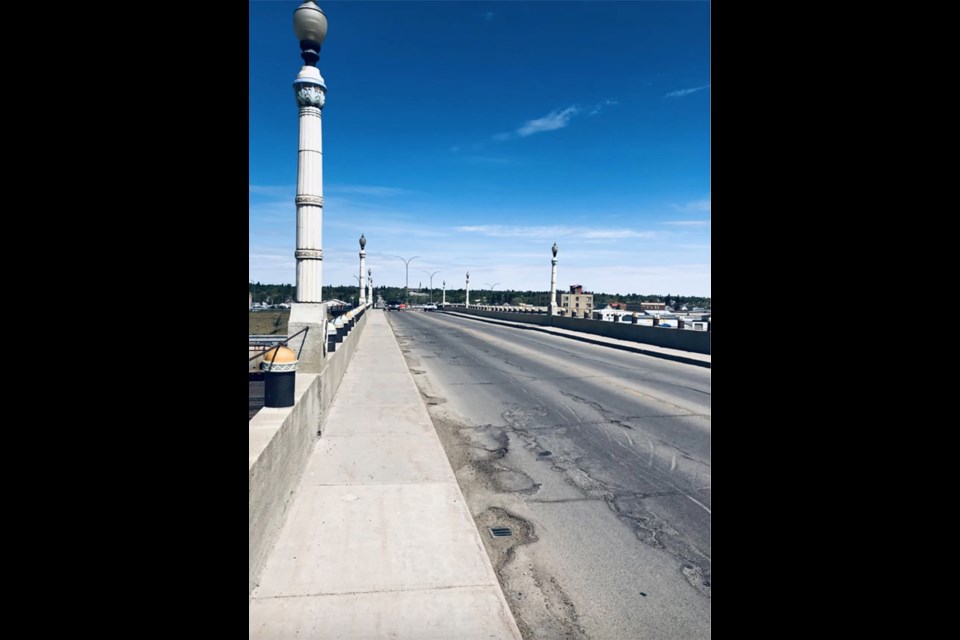From a rickety wood bridge to a modern concrete construct, the Fourth Avenue Bridge — also known as the Thunderbird Viaduct — has been a valuable lifeline for residents to reach both sides of the community.
A flimsy wooden bridge was built across Thunder Creek in 1909 and was known as the “Fifty Cent Bridge” because children would often attempt to trick pedestrians into paying a toll, according to archival material and history books.
The city replaced that structure with the 2,000-foot-long concrete Fourth Avenue Bridge in 1929 for $164,729, with Mayor James Pascoe officially opening it on Dec. 19, 1929, according to archival newspaper clippings.
“I declare this bridge open to traffic. God save the King,” the mayor said.
More than a dozen politicians — including a Canadian senator, MPs, MLAs, and the mayor of Regina — crowded onto the bridge to bask in the “glory of the architectural marvel.”
“The Moose Jaw bridge (combines) the grace of the old Grecian structures with the strength of the Roman buildings,” provincial public works minister J.F. Bryant said. The latter has lasted through the ages and, Bryant said amidst laughter, the Moose Jaw viaduct “should last for 3,000 years.”
After the ceremony, 150 people paid $1 each to attend a gala banquet at the Grant Hall.
Dr. Claude Allan Porter Turner, an engineer from Minneapolis, designed the bridge, an example of the art moderne style of architecture.
According to architectural historian Ross Herrington, Turner may have been influenced by the opening of Tutankhamun’s tomb in 1922, resulting in Egyptian elements. This can be seen in the terra cotta lamp standards, the coloured bollards, and the ornate column heads supporting the structure.
The bridge is similar in design to the Albert Street Memorial Bridge in Regina, on which Turner also worked.
Also along the bridge are images of moose and two Aboriginal men, Bear Ghost and Mike Oka.
Bear Ghost likely had a connection to the Moose Jaw Sioux, who fled to Canada after the Battle of Little Bighorn in 1876. Ted Bison from Sayre, Oklahoma, told late Moose Jaw historian Leith Knight that Bear Ghost was his great-great-grandfather. There are, however, records of multiple men with the same name.
Meanwhile, Mike Oka appears to have been a member of the Blood Tribe from southern Alberta.
It is possible, if not likely that neither man spent much time in Moose Jaw. It is unknown why the artist who made these medallions opted to honour Mike Oka and Bear Ghost.
Unfortunately, the city council of the day was not privy to the bridge’s design. Regardless, it is assumed that Bear Ghost and Mike Oka represent the Native peoples who lived in the area for generations.
In 2017 the city installed a plaque on the bridge that noted its true name as Thunderbird Viaduct. The bridge was given that name in 1952 when council adopted a report providing naming suggestions for multiple city bridges. The report also recommended other bridges be known as Assiniboine Bridge, Blackfeet Bridge, Sioux Bridge, and Cree Bridge.
The Thunderbird name was chosen, in part, because it was felt that Thunder Creek was named after the thunderbird of Aboriginal culture.




